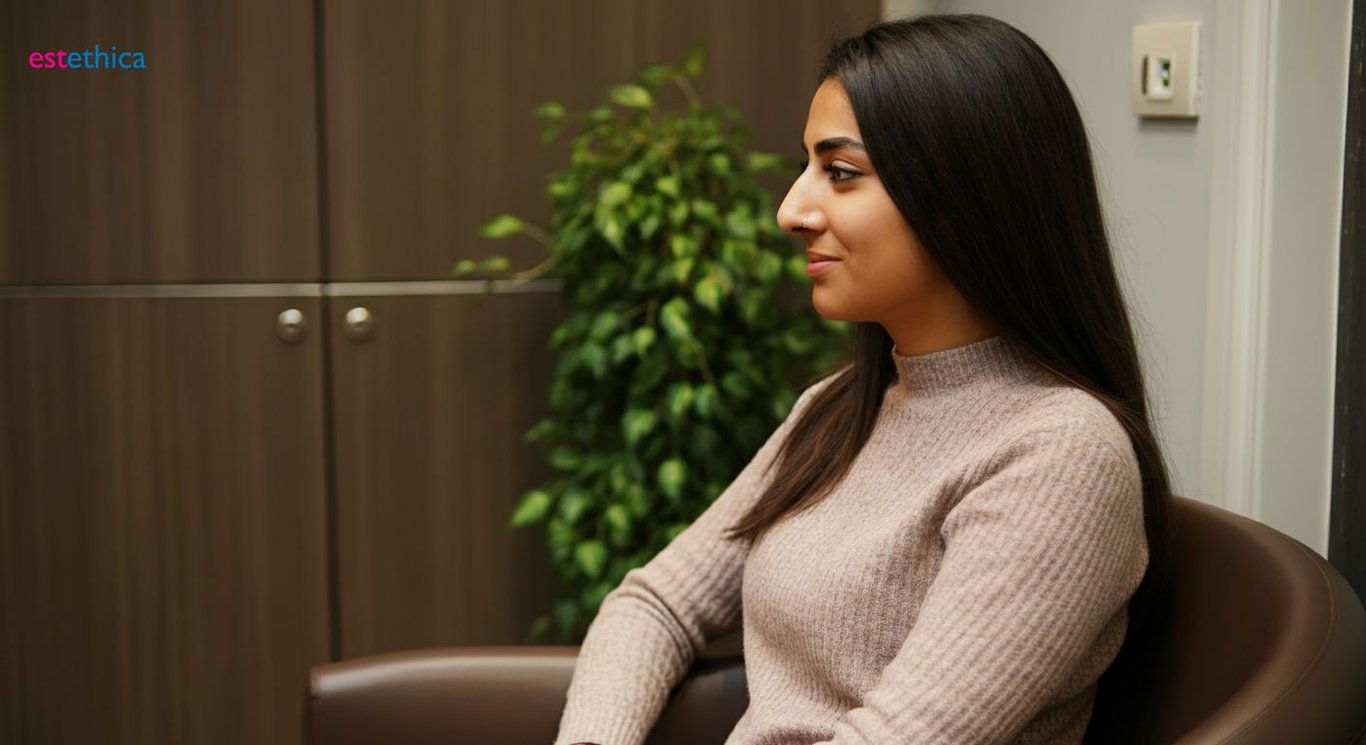Reshape Your Confidence: The Ultimate Guide to Rhinoplasty
Discover the transformative potential of rhinoplasty, tailored to enhance your natural beauty and improve functionality.
Rhinoplasty, commonly referred to as a nose job, is more than just a cosmetic procedure. It offers not only aesthetic enhancements but also significant functional improvements such as better breathing. This blog will guide you through the various facets of rhinoplasty, whether you're considering it for its health benefits or to enhance your appearance. Dive into our comprehensive guide and reshape your confidence today.
Rhinoplasty: Beyond Aesthetics - Functionality and Breathing
Enhancing Breathing Through Rhinoplasty
Rhinoplasty, commonly known as a nose job, is often associated with aesthetic improvements. However, its functional benefits are equally significant. Many individuals seek rhinoplasty to correct structural issues that impede proper airflow. A deviated septum, for example, can cause significant breathing difficulties.
Nose surgery addresses these concerns by reshaping the nasal passages, which facilitates better breathing. This can lead to a noticeable improvement in overall life quality. Functional nasal reconstruction not only improves the physical aspect but also contributes positively to daily activities and sleep quality, highlighting the dual benefits of the procedure.
- Improved airflow, leading to easier breathing.
- Correction of structural issues like a deviated septum.
- Enhancement of overall quality of life through better sleep and daily activities.
The Functional Aspects of Ethnic Rhinoplasty
Ethnic rhinoplasty requires a nuanced approach, carefully considering the patient's unique nasal structure and ethnic background. This specialized form of nose surgery not only aims to refine the nose's appearance but also addresses functional concerns such as breathing problems. In some ethnic groups, nasal structures may naturally lead to restricted airflow, making functional correction a crucial part of the procedure. For instance, patients might experience better breathing after rhinoplasty. Septoplasty, often combined with rhinoplasty, straightens the septum to improve airflow, addressing breathing issues and enhancing overall nasal function.
- Initial assessment of nasal airway function to diagnose obstructions.
- Customized surgical plan to address structural issues affecting breathing.
- Post-operative care focused on maintaining improved nasal airflow.

Ethnic Rhinoplasty: Tailoring the Procedure to Your Unique Features
Customizing Nose Surgery for Ethnic Features
Ethnic rhinoplasty is a specialized approach to rhinoplasty that respects the unique nasal structures and aesthetic preferences of various ethnic groups. Unlike traditional nose surgery, ethnic nose surgery focuses on achieving harmony with other facial features while preserving the patient's cultural identity. This requires a deep understanding of different nasal anatomies and how surgical changes will affect overall facial aesthetics. Skilled surgeons tailor their techniques to meet individual needs, ensuring results that look natural and balanced.
For example, someone of Asian descent might seek to refine the nasal tip or add height to the bridge, while preserving the natural shape of their nose. Another patient might desire to narrow a wider nasal base or refine nostril shape to better align with their facial features. 95% of patients are satisfied with the aesthetic balance achieved through carefully planned surgical adjustments, enhancing their features while respecting their origins. With ethnic rhinoplasty, the goal is always to enhance beauty in a way that honors cultural heritage and individual uniqueness.
- Preservation of ethnic identity
- Harmonious balance with facial features
- Customized surgical techniques
Understanding the Goals of Ethnic Nose Surgery
The primary goal of ethnic nose surgery is to enhance the nose’s appearance while maintaining its natural character and function. Surgeons consider various factors, including skin thickness, cartilage strength, and nasal projection, to create a personalized surgical plan. This might mean refining the nasal tip, adjusting the bridge height, or improving nostril symmetry. Each step is carefully calibrated to ensure the result complements the individual's features and honors their ethnic background. The result is a nose that not only looks better but also functions optimally, promoting confidence and well-being.
- Comprehensive evaluation of nasal structure and facial harmony
- Personalized surgical plan to address specific aesthetic goals
- Detailed discussion of expected outcomes and potential adjustments

Rhinoplasty Recovery: What to Expect and How to Optimize Healing
Navigating the Initial Stages of Rhinoplasty Recovery
The immediate aftermath of a rhinoplasty, or nose job, involves managing expected swelling and bruising around the nose and eyes. Patients often find that applying cold compresses and keeping the head elevated helps minimize these effects. Following specific dietary recommendations, that generally includes soft foods, ensures minimal strain on the healing tissues. Avoiding strenuous physical activity during this phase is crucial, as it can exacerbate swelling and potentially disrupt the healing process.
Adhering to post-operative instructions diligently ensures a smoother and more comfortable recovery. A successful recovery also depends on attending all follow-up appointments with the surgeon to monitor progress and address any concerns promptly. Typically, about 80% of the initial swelling subsides within the first few weeks, allowing patients to begin seeing the early results of their nose surgery. The remaining swelling gradually resolves over several months. A strategic approach to these immediate steps can significantly influence the long-term outcome.
- Cold compresses help reduce initial swelling and bruising.
- Elevating the head minimizes post-operative discomfort.
- Adhering to dietary guidelines supports tissue repair.
Optimizing Healing After Nose Surgery
To enhance healing after nose surgery, creating an environment that supports your body's natural recovery processes is essential. Gentle nasal irrigation with saline solution can help keep the nasal passages clear, reducing the risk of infection, and promoting comfort. Patients should ensure they get adequate rest, as sleep supports cellular repair and overall recovery. Consistent communication with the surgical team is key, allowing for timely management of any unexpected issues. The intake of vitamin C has been linked to increased healing in 76% of patients.
- Rest: Prioritize sufficient sleep to aid tissue repair.
- Hydration: Drink plenty of water to maintain skin elasticity and overall health.
- Nutrition: Consume a balanced diet rich in vitamins and minerals to accelerate healing.

Choosing Your Rhinoplasty Surgeon: Expertise and Artistry Combined
Essential Qualifications for Rhinoplasty Surgeons
Selecting a surgeon for rhinoplasty is pivotal, and verifying credentials is a foundational step. Ideal candidates typically hold board certification in plastic surgery or otolaryngology, indicating they've met rigorous standards of education, training, and expertise. Beyond certification, experience matters considerably. Look for a surgeon who has a proven track record with a substantial number of rhinoplasty procedures performed successfully. This hands-on experience is invaluable, honing their skills and judgment in diverse nasal anatomies and surgical scenarios. In fact, surgeons with over ten years of rhinoplasty experience report higher patient satisfaction rates, balancing functional improvements with aesthetic desires.
Consider a surgeon's specific training in rhinoplasty, as techniques and philosophies can vary. Some surgeons may have completed fellowships or advanced courses focused exclusively on nasal surgery, providing them with specialized knowledge and skills. For instance, surgeons trained in both open and closed rhinoplasty techniques can offer a more tailored approach to each patient's unique needs. This level of expertise ensures the surgeon can adapt their methods to achieve optimal outcomes, blending technical precision with personalized artistry.
- Board certification confirms standard education and training.
- Extensive experience ensures honed skills and judgment.
- Specialized training enhances expertise in diverse rhinoplasty techniques.
Assessing the Aesthetic Approach of Your Surgeon
The success of rhinoplasty hinges not only on technical skill but also on the surgeon's aesthetic sensibility. Reviewing a surgeon's portfolio of before-and-after photos is crucial to gauge their artistic style and determine if it aligns with your personal aesthetic goals. Pay attention to the consistency and quality of their results, ensuring transformations look natural and well-proportioned. Ethnic rhinoplasty, for example, requires a keen understanding of diverse nasal anatomies to preserve cultural identity while enhancing appearance.
During consultations, discuss your desired outcomes and listen carefully to the surgeon's recommendations. A good surgeon will provide an honest assessment of what can realistically be achieved, explaining the potential limitations and adjustments required to meet your expectations. They should also demonstrate an understanding of facial harmony, ensuring the nose complements your other features seamlessly. A survey reveals that 85% of patients who felt their surgeon understood their aesthetic vision were ultimately more satisfied with the rhinoplasty results. Look for a surgeon who values clear communication, artistic vision, and a collaborative approach to achieving your desired look through nose surgery.
- Review before-and-after photos to assess artistic style.
- Discuss desired outcomes and realistic expectations.
- Evaluate understanding of facial harmony and aesthetic goals.
Rhinoplasty Enhanced by Septoplasty: Improved Breathing and Nasal Function
Comprehensive Rhinoplasty Recovery: Enhanced Healing Through Personalized Care
Frequently Asked Questions
What functional benefits can be achieved through Rhinoplasty?
What is Ethnic Rhinoplasty and how does it differ from traditional nose surgery?
What does Rhinoplasty recovery time typically involve, and how can I optimize healing?
What qualifications should I look for in a Rhinoplasty surgeon?
Achieve your aesthetic goals with estethica's personalized solutions and expert care.
📞 Book Your Free Consultation!